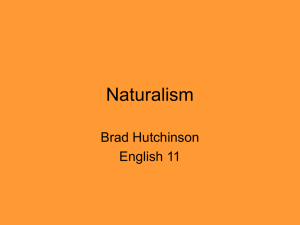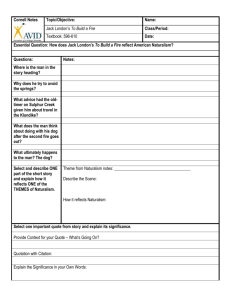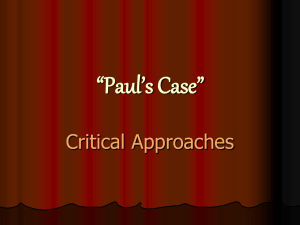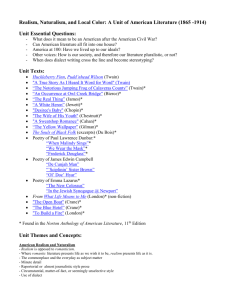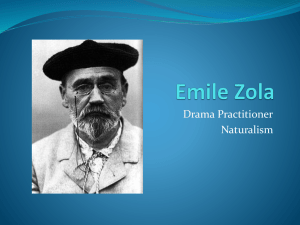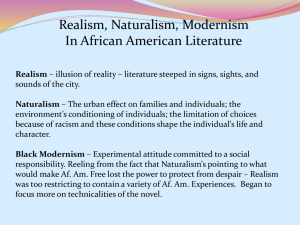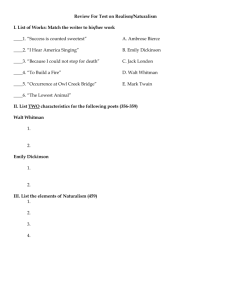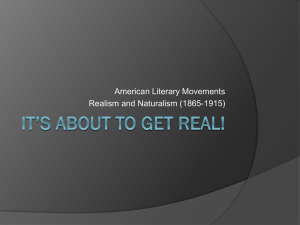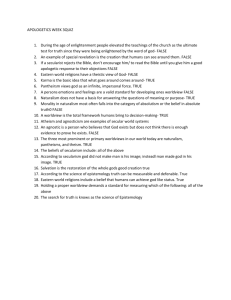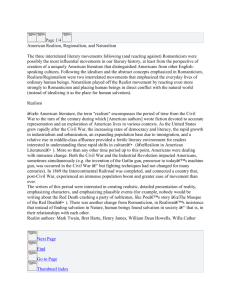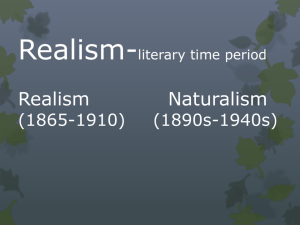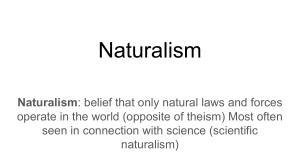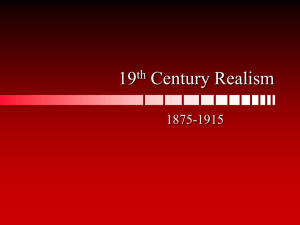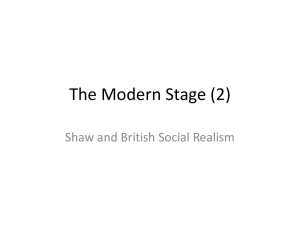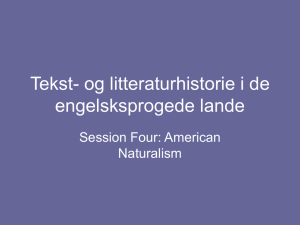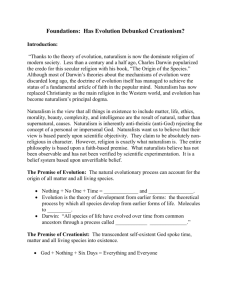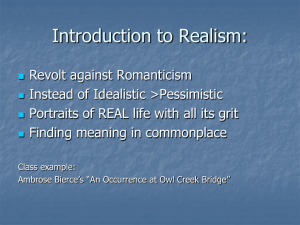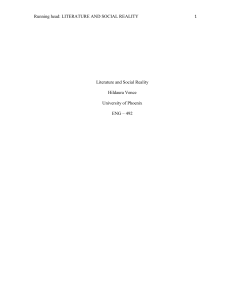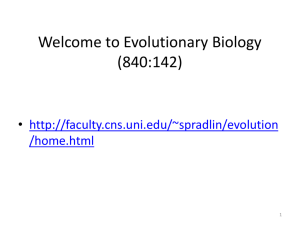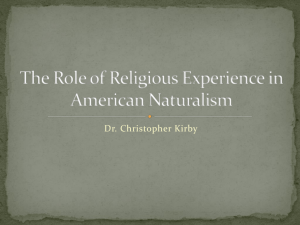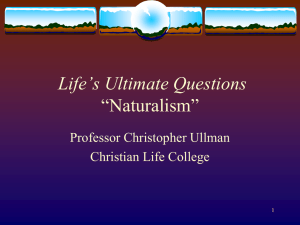Jack London: To Build a Fire (1908) Lead
advertisement
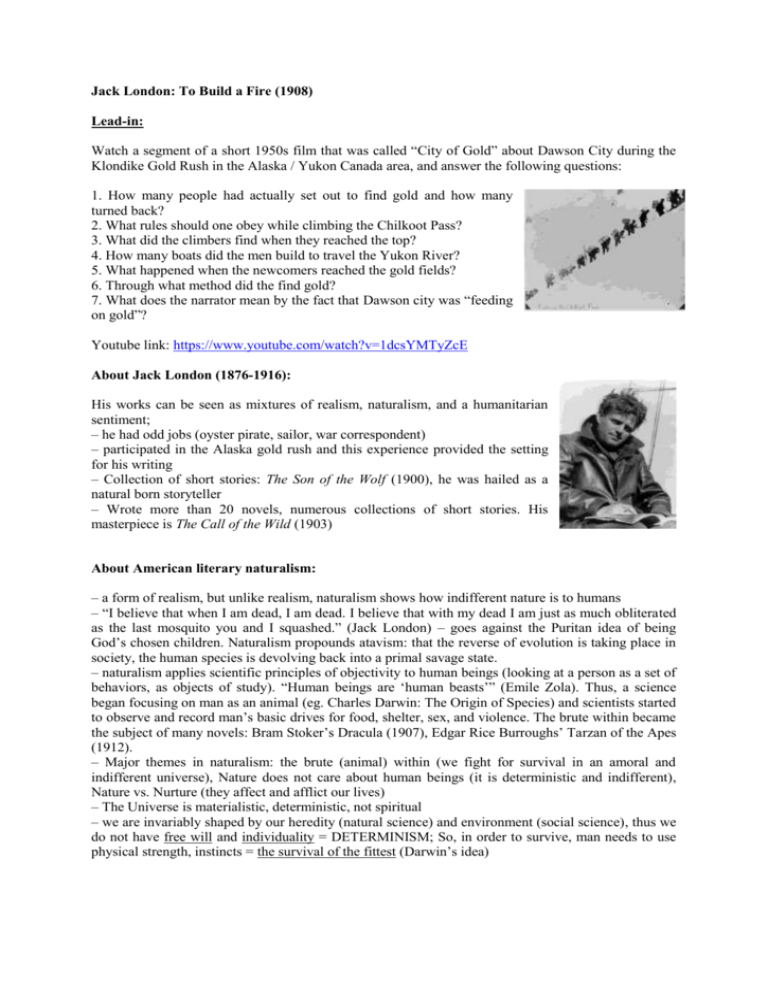
Jack London: To Build a Fire (1908) Lead-in: Watch a segment of a short 1950s film that was called “City of Gold” about Dawson City during the Klondike Gold Rush in the Alaska / Yukon Canada area, and answer the following questions: 1. How many people had actually set out to find gold and how many turned back? 2. What rules should one obey while climbing the Chilkoot Pass? 3. What did the climbers find when they reached the top? 4. How many boats did the men build to travel the Yukon River? 5. What happened when the newcomers reached the gold fields? 6. Through what method did the find gold? 7. What does the narrator mean by the fact that Dawson city was “feeding on gold”? Youtube link: https://www.youtube.com/watch?v=1dcsYMTyZcE About Jack London (1876-1916): His works can be seen as mixtures of realism, naturalism, and a humanitarian sentiment; – he had odd jobs (oyster pirate, sailor, war correspondent) – participated in the Alaska gold rush and this experience provided the setting for his writing – Collection of short stories: The Son of the Wolf (1900), he was hailed as a natural born storyteller – Wrote more than 20 novels, numerous collections of short stories. His masterpiece is The Call of the Wild (1903) About American literary naturalism: – a form of realism, but unlike realism, naturalism shows how indifferent nature is to humans – “I believe that when I am dead, I am dead. I believe that with my dead I am just as much obliterated as the last mosquito you and I squashed.” (Jack London) – goes against the Puritan idea of being God’s chosen children. Naturalism propounds atavism: that the reverse of evolution is taking place in society, the human species is devolving back into a primal savage state. – naturalism applies scientific principles of objectivity to human beings (looking at a person as a set of behaviors, as objects of study). “Human beings are ‘human beasts’” (Emile Zola). Thus, a science began focusing on man as an animal (eg. Charles Darwin: The Origin of Species) and scientists started to observe and record man’s basic drives for food, shelter, sex, and violence. The brute within became the subject of many novels: Bram Stoker’s Dracula (1907), Edgar Rice Burroughs’ Tarzan of the Apes (1912). – Major themes in naturalism: the brute (animal) within (we fight for survival in an amoral and indifferent universe), Nature does not care about human beings (it is deterministic and indifferent), Nature vs. Nurture (they affect and afflict our lives) – The Universe is materialistic, deterministic, not spiritual – we are invariably shaped by our heredity (natural science) and environment (social science), thus we do not have free will and individuality = DETERMINISM; So, in order to survive, man needs to use physical strength, instincts = the survival of the fittest (Darwin’s idea) To Build a Fire – Study Questions: 1. Read the opening paragraph. How is the mood? What is the man’s reaction to the landscape? 2. Describe the man in the story (how he thinks of his own abilities, how he behaves in relation to his environment). “The trouble with the man was,” the narrator tells, “that he was without imagination.” What does this mean? Why is this a serious fault? 3. Find passages that foreshadow later events. Explain the link between each passage and the later event. 4. How does this story reflect key naturalist beliefs? Support your ideas with quotations! 5. Compare and contrast the man and the dog! What does each symbolize? How is the relationship between them and what does this relationship symbolize on a larger scale? DOG Their relationship: MAN 6. Enumerate the key themes and connecting symbols in the story! 7. The man’s conflict with nature is an EXTERNAL conflict, and is demonstrated by the challenges and obstacles he encounters and his responses to them. Give examples of this conflict (lines from the story)! Is there an INTERNAL conflict? If yes, how does this appear? (give examples of the internal conflict, as well!)
